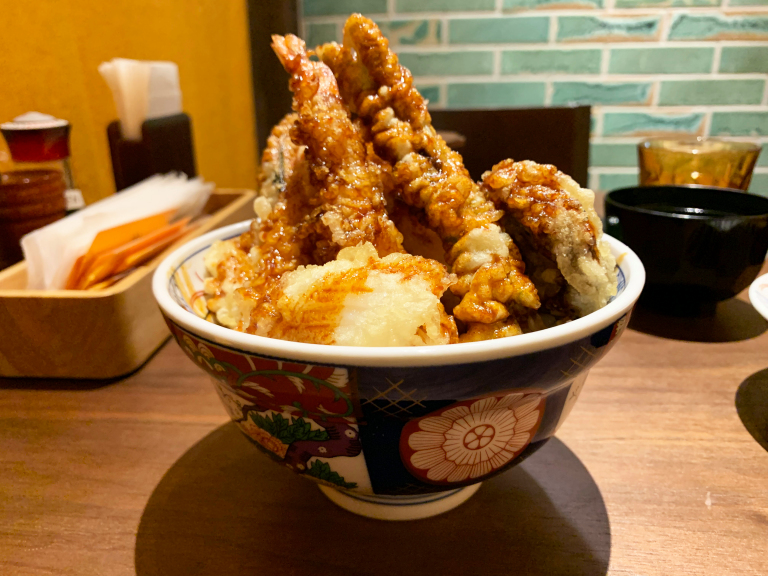
What kind of flair does Singaporean tempura have? Let’s find out!
Did you know that much of the food we know and love has taken a long journey across the world and across history to become what it is today? Curry, for example, was brought to Japan from India through England, after which it was adapted into Japanese curry. Funnily enough, popular Japanese curry chain CoCo Ichibanya now has a branch in both England and India, resulting in an interesting cycle of importation and exportation, as well as, of course, a delightful array of curry types.
Now the cycle is happening with tempura, too! Tempura is known as a quintessential Japanese dish, but it was actually brought to Japan by Portuguese traders in the 16th and 17th centuries, in the form of a battered and fried green bean dish called peixinhos da horta. More recently, tempura was also brought to Singapore, where it has been further adapted to suit Singaporean tastes, and now that new version has made its way back to Japan!
What does Singaporean tempura taste like? How does it compare to Japanese tempura? Of course, we had to try it to find out.
You can find Singaporean tempura bowls in Tokyo at a newly opened restaurant known as Tendon Kohaku, which opened on March 29 on the first floor of the Coredo Muromachi Terrace shopping center in Nihonbashi. It’s actually a highly popular tempura bowl chain restaurant in Singapore, though on the outside it looks like any regular tempura shop that you’d find in Japan.
The menu revealed that the restaurant also has branches in Malaysia, the Philippines, and even Canada, as well as Singapore, so it had clearly established itself long before opening its first branch in Japan. Since the restaurant originated in Singapore, however, we expected the tempura to have a Singaporean flair when we arrived at the Nihonbashi branch, and we were right–to an extent.
When ordering from Tendon Kohaku, you have a choice between two different sauces: “Original Sauce” and “Spicy Sauce”. We were most intrigued with the spicy sauce, since Japanese tempura is generally served with a salty-sweet sauce, which is never spicy. We ordered the restaurant’s specialty bowl, the “Kohaku Tendon” (1,000 yen [US$9.25]), with the spicy sauce to get the full Tendon Kohaku experience….
…And it turned out to be super spicy!!
Every bite of the tempura was a fresh fiery burn on our tongues. Some might not like this level of spice, which has a distinct Southeast Asian aspect, but for us it was really tasty.
The quality of the tempura was also really good. The batter on the shrimp was light but satisfyingly crunchy, and the chicken was tender inside its crunchy exterior. The batter also clung to each ingredient, with no peeling or sogginess, making it well worth the cost of 1,000 yen. We gave the original sauce a try too, and its flavor was similar enough to Japanese flavors that you would never know it was created in another country. It tasted like a high-quality Japanese tempura bowl.
But why are the flavors of Kohaku’s tempura bowls so close to Japanese flavors? As we have seen with Japanese dishes in other countries, like sushi and ramen, there’s often something non-traditional about them that makes them unique. But Tendon Kohaku’s tempura bowl tastes like a Japanese dish. Why is that?
One reason could be in the restaurant’s origins. Tendon Kohaku is actually affiliated with Fuji Soba, a Japanese soba restaurant. Fuji Soba provided support for the development Tendon Kohaku when it opened in Singapore. To get more information, we spoke to Mr. Kudo, who works for the marketing department of Fuji Soba, and who helped with the beginnings of Tendon Kohaku.
“Tempura bowls are widely popular in Singapore right now. Spicy sauces like chili sauce are a cultural foundation there, so adding spicy sauce to tempura bowls makes it very popular. By the way, Kohaku’s tempura bowl sauce is basically spicy red peppers mixed with tempura sauce.”
So there you have it; the closeness of flavor is because it was developed with the help of Japanese chefs, then catered to Singaporean tastes. That’s also why it’s become so popular in Singapore! Tempura bowls are a surprisingly adaptable food. Who would’ve thought?
From Portugal, to Japan, to Singapore and back to Japan: tempura sure has taken a long journey to become what it is now. Where will it go next, and how will be transformed? We can’t wait to find out.
Restaurant information:
Tendon Kohaku Coredo Muromachi Terrace / 天丼 琥珀 コレド室町テラス
Address: Tokyo-to Chuo-ku Nihonbashi Muromachi 3-2-1 Coredo Muromachi Terrace Section 1-13
東京都中央区日本橋室町3-2-1 コレド室町テラス1‐13区画
Open 11 a.m.-3 p.m., 5 p.m.-8 p.m. (weekdays), 11 a.m.-8 p.m. (weekends, holidays)
Photos © SoraNews24
● Want to hear about SoraNews24’s latest articles as soon as they’re published? Follow us on Facebook and Twitter!


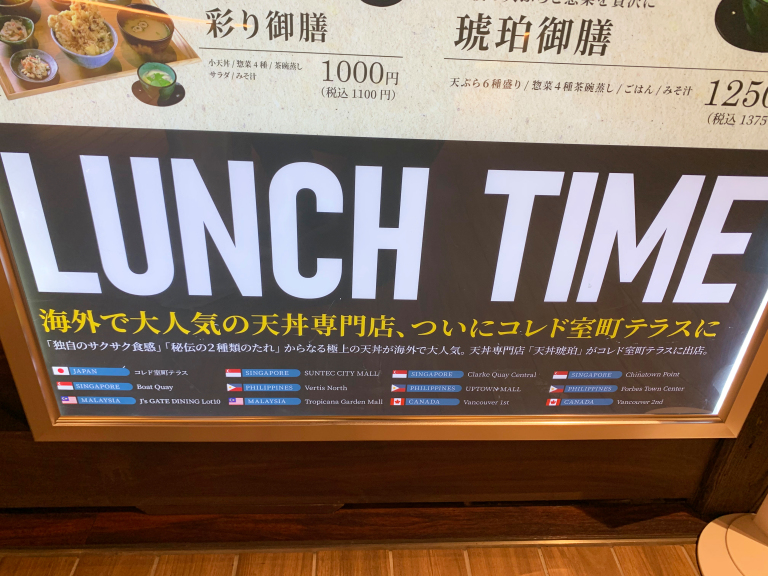
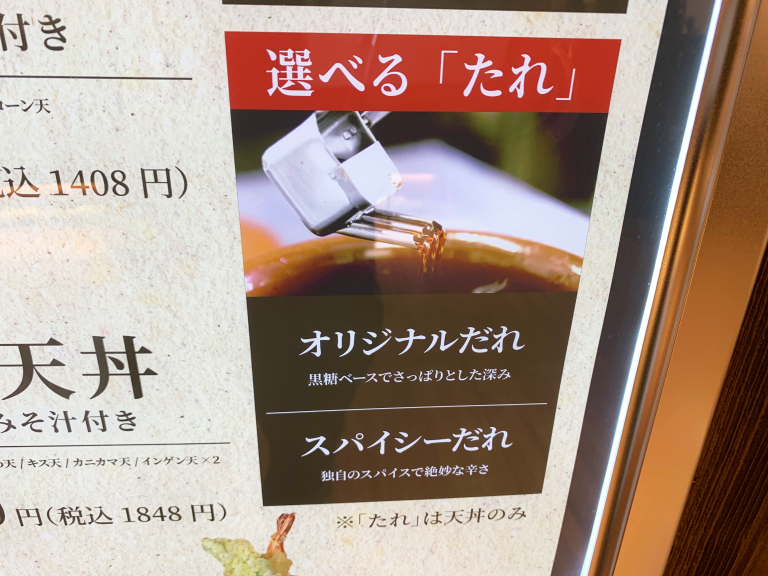
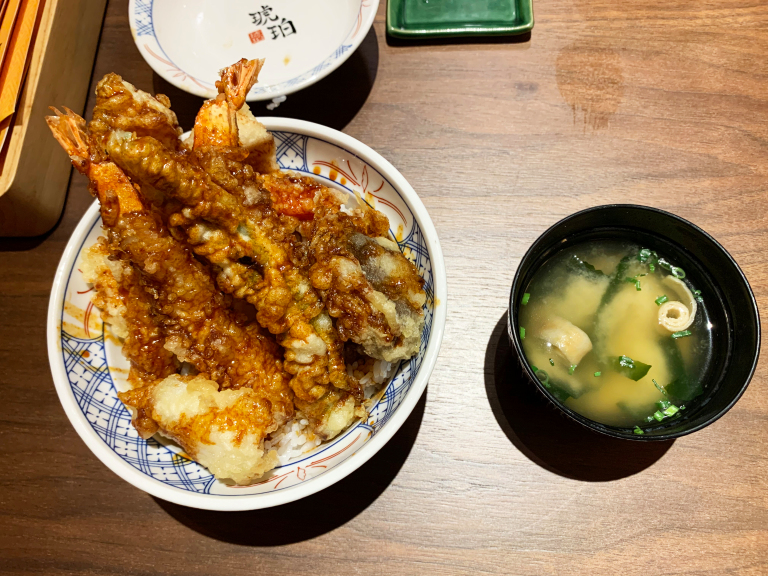
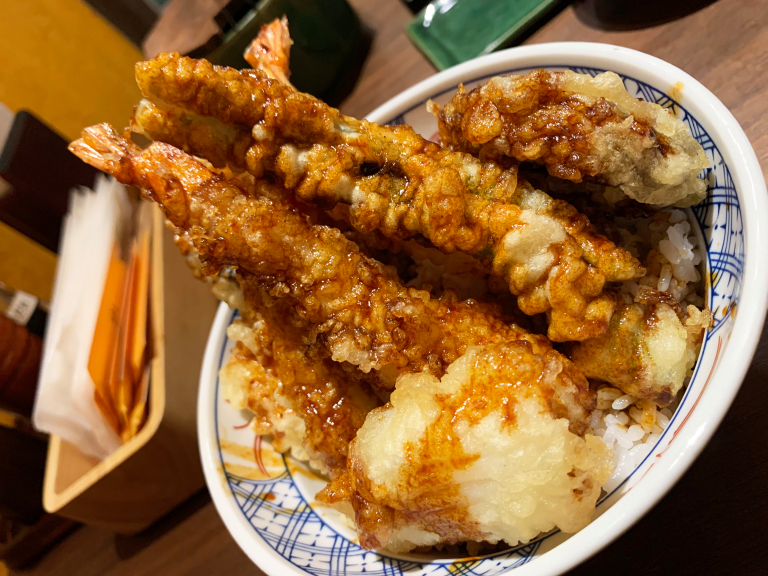
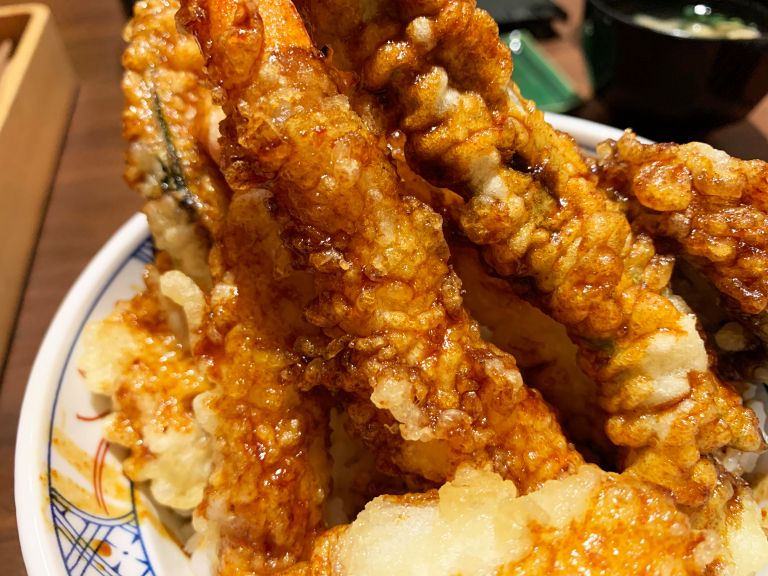


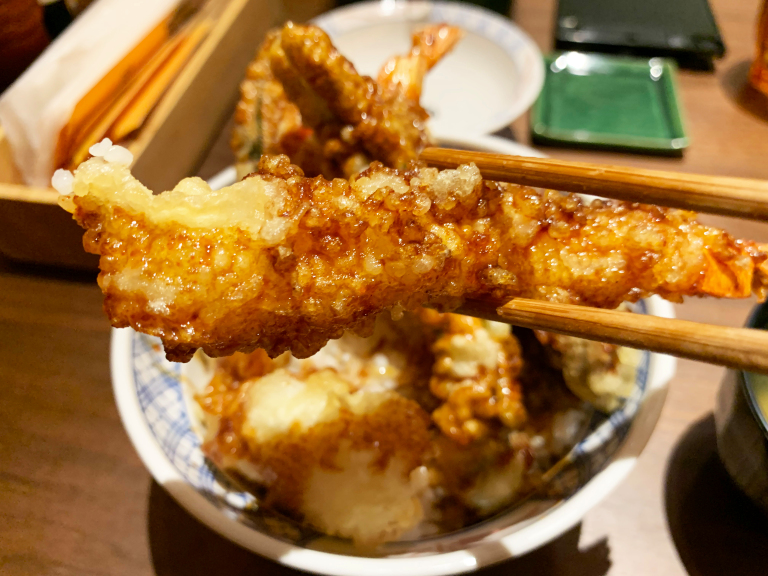
 How to make a delicious tempura nothing bowl without any actual cooking【SoraKitchen】
How to make a delicious tempura nothing bowl without any actual cooking【SoraKitchen】 Tokyo restaurant offers “DIY Tempura Bowls,” so of course we had to go check it out
Tokyo restaurant offers “DIY Tempura Bowls,” so of course we had to go check it out Cheap vs. expensive — Is a premium-priced tempura bento really worth it?【Taste test】
Cheap vs. expensive — Is a premium-priced tempura bento really worth it?【Taste test】 How to turn leftover tempura into fried rice (or why to buy all the takeout tempura you can)
How to turn leftover tempura into fried rice (or why to buy all the takeout tempura you can) Wear your love for Nissin Donbei noodle bowls on your bag with these cute mini charms
Wear your love for Nissin Donbei noodle bowls on your bag with these cute mini charms Foreigner’s request for help in Tokyo makes us sad for the state of society
Foreigner’s request for help in Tokyo makes us sad for the state of society Japanese city loses residents’ personal data, which was on paper being transported on a windy day
Japanese city loses residents’ personal data, which was on paper being transported on a windy day Should you add tartar sauce to Japanese curry rice? CoCo Ichi makes diners an unusual offer
Should you add tartar sauce to Japanese curry rice? CoCo Ichi makes diners an unusual offer Seaside scenery, history, and so many desserts on Yokohama’s Akai Kutsu【Japan Loop Buses】
Seaside scenery, history, and so many desserts on Yokohama’s Akai Kutsu【Japan Loop Buses】 Ghibli Park now selling “Grilled Frogs” from food cart in Valley of Witches
Ghibli Park now selling “Grilled Frogs” from food cart in Valley of Witches Red light district sushi restaurant in Tokyo shows us just how wrong we were about it
Red light district sushi restaurant in Tokyo shows us just how wrong we were about it Is the all-you-can-eat KFC buffet in Tokyo really as good as they say it is?
Is the all-you-can-eat KFC buffet in Tokyo really as good as they say it is? Japanese ramen restaurants under pressure from new yen banknotes
Japanese ramen restaurants under pressure from new yen banknotes Suntory x Super Mario collaboration creates a clever way to transform into Mario【Videos】
Suntory x Super Mario collaboration creates a clever way to transform into Mario【Videos】 Why are the Los Angeles Dodgers wearing the caps from Nagoya’s professional baseball team?
Why are the Los Angeles Dodgers wearing the caps from Nagoya’s professional baseball team? McDonald’s new Happy Meals offer up cute and practical Sanrio lifestyle goods
McDonald’s new Happy Meals offer up cute and practical Sanrio lifestyle goods French Fries Bread in Tokyo’s Shibuya becomes a hit on social media
French Fries Bread in Tokyo’s Shibuya becomes a hit on social media Studio Ghibli releases new action figures featuring Nausicaä of the Valley of the Wind characters
Studio Ghibli releases new action figures featuring Nausicaä of the Valley of the Wind characters New private rooms on Tokaido Shinkansen change the way we travel from Tokyo to Kyoto
New private rooms on Tokaido Shinkansen change the way we travel from Tokyo to Kyoto Tokyo Tsukiji fish market site to be redeveloped with 50,000-seat stadium, hotel, shopping center
Tokyo Tsukiji fish market site to be redeveloped with 50,000-seat stadium, hotel, shopping center All-you-can-drink Starbucks and amazing views part of Tokyo’s new 170 meter-high sky lounge
All-you-can-drink Starbucks and amazing views part of Tokyo’s new 170 meter-high sky lounge Beautiful Ghibli sealing wax kits let you create accessories and elegant letter decorations【Pics】
Beautiful Ghibli sealing wax kits let you create accessories and elegant letter decorations【Pics】 Studio Ghibli releases Kiki’s Delivery Service chocolate cake pouches in Japan
Studio Ghibli releases Kiki’s Delivery Service chocolate cake pouches in Japan New definition of “Japanese whiskey” goes into effect to prevent fakes from fooling overseas buyers
New definition of “Japanese whiskey” goes into effect to prevent fakes from fooling overseas buyers Our Japanese reporter visits Costco in the U.S., finds super American and very Japanese things
Our Japanese reporter visits Costco in the U.S., finds super American and very Japanese things Studio Ghibli unveils Mother’s Day gift set that captures the love in My Neighbour Totoro
Studio Ghibli unveils Mother’s Day gift set that captures the love in My Neighbour Totoro More foreign tourists than ever before in history visited Japan last month
More foreign tourists than ever before in history visited Japan last month New Pokémon cakes let you eat your way through Pikachu and all the Eevee evolutions
New Pokémon cakes let you eat your way through Pikachu and all the Eevee evolutions Sales of Japan’s most convenient train ticket/shopping payment cards suspended indefinitely
Sales of Japan’s most convenient train ticket/shopping payment cards suspended indefinitely Sold-out Studio Ghibli desktop humidifiers are back so Totoro can help you through the dry season
Sold-out Studio Ghibli desktop humidifiers are back so Totoro can help you through the dry season Japanese government to make first change to romanization spelling rules since the 1950s
Japanese government to make first change to romanization spelling rules since the 1950s Ghibli founders Toshio Suzuki and Hayao Miyazaki contribute to Japanese whisky Totoro label design
Ghibli founders Toshio Suzuki and Hayao Miyazaki contribute to Japanese whisky Totoro label design Doraemon found buried at sea as scene from 1993 anime becomes real life【Photos】
Doraemon found buried at sea as scene from 1993 anime becomes real life【Photos】 Tokyo’s most famous Starbucks is closed
Tokyo’s most famous Starbucks is closed One Piece characters’ nationalities revealed, but fans have mixed opinions
One Piece characters’ nationalities revealed, but fans have mixed opinions We asked a Uniqlo employee what four things we should buy and their suggestions didn’t disappoint
We asked a Uniqlo employee what four things we should buy and their suggestions didn’t disappoint Princesses, fruits, and blacksmiths: Study reveals the 30 most unusual family names in Japan
Princesses, fruits, and blacksmiths: Study reveals the 30 most unusual family names in Japan Clam chowder tempura being offered by Japan’s most popular tempura restaurant chain
Clam chowder tempura being offered by Japan’s most popular tempura restaurant chain Limited-edition Carbonara Udon will anger noodle purists and pasta lovers 【Taste test】
Limited-edition Carbonara Udon will anger noodle purists and pasta lovers 【Taste test】 Master tempura chef in Hamamatsu uses his bare hands to cook with boiling oil【Video】
Master tempura chef in Hamamatsu uses his bare hands to cook with boiling oil【Video】 Tamoya Udon in Singapore has something its outlets in Japan don’t
Tamoya Udon in Singapore has something its outlets in Japan don’t The best soba restaurant on Yakushima island, according to locals
The best soba restaurant on Yakushima island, according to locals Udon chain’s awesome “Tempura Pass” deal works out to less than 10 yen per piece over five weeks
Udon chain’s awesome “Tempura Pass” deal works out to less than 10 yen per piece over five weeks Think you’ve had every type of tempura? Not until you’ve eaten deep-fried maple leaves
Think you’ve had every type of tempura? Not until you’ve eaten deep-fried maple leaves This is Japan’s oldest oyakodon chicken-and-egg rice bowl restaurant, and it’s awesome
This is Japan’s oldest oyakodon chicken-and-egg rice bowl restaurant, and it’s awesome Here’s how one Tokyo neighborhood mixes modern technology and traditional culture to beat the heat
Here’s how one Tokyo neighborhood mixes modern technology and traditional culture to beat the heat We visit a ramen bar in Croatia, meet a whole new version of ramen we can’t wait to make at home
We visit a ramen bar in Croatia, meet a whole new version of ramen we can’t wait to make at home Which Japanese conveyor belt sushi chain has the best Prawn Tempura Sushi?【Taste test】
Which Japanese conveyor belt sushi chain has the best Prawn Tempura Sushi?【Taste test】 No one asked but we did it anyways: MOS rice patty burgers X ochazuke【Taste test】
No one asked but we did it anyways: MOS rice patty burgers X ochazuke【Taste test】 The top 10 most popular instant noodle brands at the start of 2021
The top 10 most popular instant noodle brands at the start of 2021 Want some carbs with your carbs? Japanese noodle restaurant offering bread soba
Want some carbs with your carbs? Japanese noodle restaurant offering bread soba This Tempura Soba Burger has some famous credentials behind its creation
This Tempura Soba Burger has some famous credentials behind its creation Was there no “Song of 2021” in Japan?
Was there no “Song of 2021” in Japan?
Leave a Reply